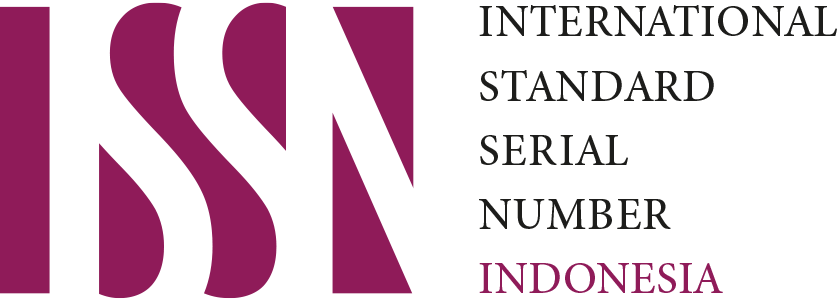The Effect of Transactional Dialogue in Teaching Speaking Modalities
Abstract
The purpose of this study was to determine whether using transactional dialogue in teaching speaking modalities experimentally improved students speaking skills. This study was conducted at SMP YPI Bintaro, the sample participants were thirty-five seventh grade students. In choosing the sample, the researchers used simple random sampling technique. This study used a quantitative method with a pre-experimental design of one group pre and post-test. The instrument used in this study was spoken test used in transactional dialogue. According to the findings of this study, the students' mean score was 64.91, while their post-test score was 68.02. The statistical hypothesis revealed that the level of significance is greater than 0.000<0.005. This means that Ho (Negative Hypothesis) was rejected and H1 was accepted. Thus, transactional dialogue in teaching speaking modalities improved students' speaking skills.
Keywords
Full Text:
PDFReferences
Anderson, J.C., Bachman, L.F., (2009) Assessing writing. Cambridge University, London.
Arikunto, S. (2005). Manajemen Penelitian. Jakarta: Rineka Cipta.
Basturkmen, H. (2002). Learner observation of, and reflection on, spoken discourse: An approach for teaching academic speaking. TESOL Journal, 11(2), 26-30. https://doi.org/10.1002/j.1949-3533.2002.tb00080.x
Brazil, D. (1995). A Grammar of Speech. Oxford: Oxford University Press
Brown, H. D., & Abeywickrama, P. (2004). Language Assessment. Principles and Classroom Practices. White Plains, NY: Pearson Education.
Burns, A. (1998). “Teaching Speaking”. In Annual Review of Applied Linguistics, 18, 3, (pp.102-123).
Bygate, M. (2009). Teaching and Testing Speaking. In M.H. Long & C.J. Doughty (Eds.), The Handbook of Language Teaching (pp. 412-440). Hoboken: Blackwell Publishing Ltd. https://doi.org/10.1002/9781444315783.ch23
Cameron, D. (2001). Working with Spoken Discourse. UK: Sage Publications Ltd.
Chaney, A. L., & Burk, T. L. (1998). Teaching Oral Communication in Grades K-8. Boston: Allyn & Bacon.
Cong, N. T. (2023). Problems and Solutions for Enhancing Awareness of Tense, Aspect, and Modality in Teaching and Learning English in Vietnam. Journal of Knowledge Learning and Science Technology ISSN: 2959-6386 (online), 2(3), 63-75. https://doi.org/10.60087/jklst.vol2.n3.p75
Creswell, J. W. (2012). Educational research. Pearson.
Dilgam, A. G. (2016). About the teaching strategies of modality in the classroom. Theory and Practice in Language Studies, 6(10), 1923 -1928. http://dx.doi.org/10.17507/tpls.0610.05
Greene, T. (2004). Coaching: The missing link. National Library of Canada= Bibliothèque nationale du Canada, Ottawa.
Harris, D. (1974). Testing English as a Second Language. New York: Mc. Graw. Hill Book Company.
Hughes. A. (2003). Testing for Language Teachers, Second Edition. Cambridge: Cambridge University Press.
Jacquet-Andrieu, A., & Colloc, J. (2014). From Self-Awareness to the Consciousness of the" Speaking Subject. International Journal of Computing Anticipatory Systems, 28, 201-217.
Khatimah, K., Ahmad, D., & Azisah, S. (2023). Using Youtube Music Video to Improve Transactional Speaking Skills at The Second Grade Students Of SMA Negeri 3 Sinjai. English Language Teaching for EFL Learners, 5(1). https://doi.org/10.24252/elties.v5i1.25851
LoBiondi-Wood & Haber, J. (1998). Nursing Research Methods, Critical Appraisal & Utilisation. 5th Edition. St. Louis: Mosby Elsevier
Lyons, J. (1977). Semantics. vol 2. Cambridge: Cambridge University.
Marino, M. (1973). A feature analysis of the modal system of English.
Lingua, 32(4), 309-323. https://doi.org/10.1016/0024-3841(73)90022-3
Nhat, T. N. M., & Minh, N. T. D. (2019). Epistemic modality in Ted Talks on education. VNU Journal of Foreign Studies, 35(4). https://doi.org/10.25073/2525-2445/vnufs.4396
Nunan, D. (1989). Designing Tasks for the Communicative Classroom. New York: Cambridge University Press.
Olshtain, E., & Celce-Murcia, M. (2016). Teaching language skills from a discourse perspective. In E. Hinkel (Eds), Handbook of research in second language teaching and learning (pp.144-158). New York: Routledge.
Öztürk, G., & Gürbüz, N. (2014). Speaking anxiety among Turkish EFL learners: The case at a state university. Journal of Language and Linguistic Studies, 10(1), 1-17.
Pipidjanoska, M. (2020). Modal Verbs in the Interlanguage of Macedonian Learners of English. Knowledge-International Journal, 40(6), 1157-1160.
Polit, D. F., & Beck, C. T. (2004). Nursing research: Principles and methods. Lippincott Williams & Wilkins.
Rachmatillah, I., Munir, A., & Anam, S. (2019). Teaching and learning transactional dialogue through flipped classroom for millennial students in an urban era. VELES (Voices of English Language Education Society), 3(2), 101-109. https://doi.org/10.29408/veles.v3i2.1567
Richards. J. (1990). The Language Teaching Matrix. Cambridge: Cambridge University Press.
Richards, J. C. (2008). Teaching listening and speaking: From theory to practice. Cambridge: Cambridge University Press
Robert, R., & Meenakshi, S. (2022). Rereading oral communication skills in English language acquisition: The unspoken spoken English. Theory and Practice in Language Studies, 12(11), 2429-2435. https://doi.org/10.17507/tpls.1211.25
Sa’adiyah, E. N., Anjarani, D. R., & Himmah, A. (2021, October). The Use of Madurese Language as Transactional Dialogue Approach in teaching English for Students Major in Law. In Prosiding Seminar Nasional Sastra, Lingua, Dan Pembelajarannya (Salinga) (Vol. 1, No. 1, pp. 56-63).
Susetyo, B., & Pd, M. (2010). Statistika Untuk Analisis Data Penelitian. Bandung: PT. Refika Aditama.
Tarigan, H. G. (1981). Berbicara sebagai Suatu Ketrampilan Berbahasa. Bandung: Angkasa.
Uztosun, M. S. (2021). Foreign language speaking competence and self‐regulated speaking motivation. Foreign Language Annals, 54(2), 410-428.
Vethamani, M. E., Manaf, U. K. A., & Akbari, O. (2008). Students' Use of Modals in Narrative Compositions: Forms and Functions. English Language Teaching, 1(1), 61-74.
Wang, Y., & Wei, L. (2022). Thinking and Speaking in a Second Language. Cambridge University Press.
Yule, G. (1989). The spoken language. In Annual Review of Applied Linguistics, 10, 163-172. https://doi.org/10.1017/S0267190500001276
DOI: https://doi.org/10.24853/elif.6.1.89-100
Refbacks
- There are currently no refbacks.
Abstracting/Indexing |
 |  |  |  |  |
 |  |  |  |  |
 |  |  |  |  |
 |  | |||
English Language in Focus (ELIF) is published by This work is licensed under
|






9.png)
2.png)






